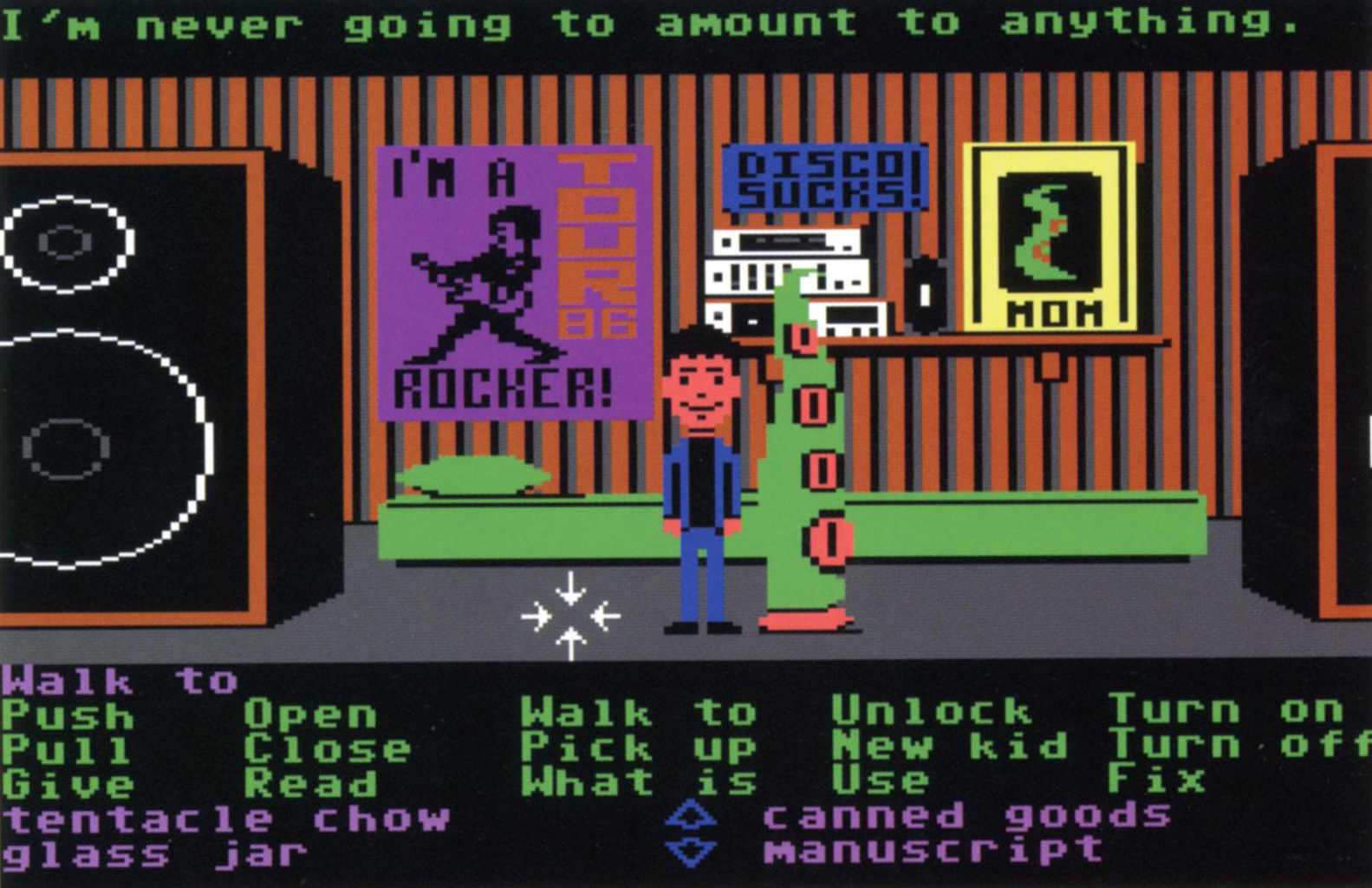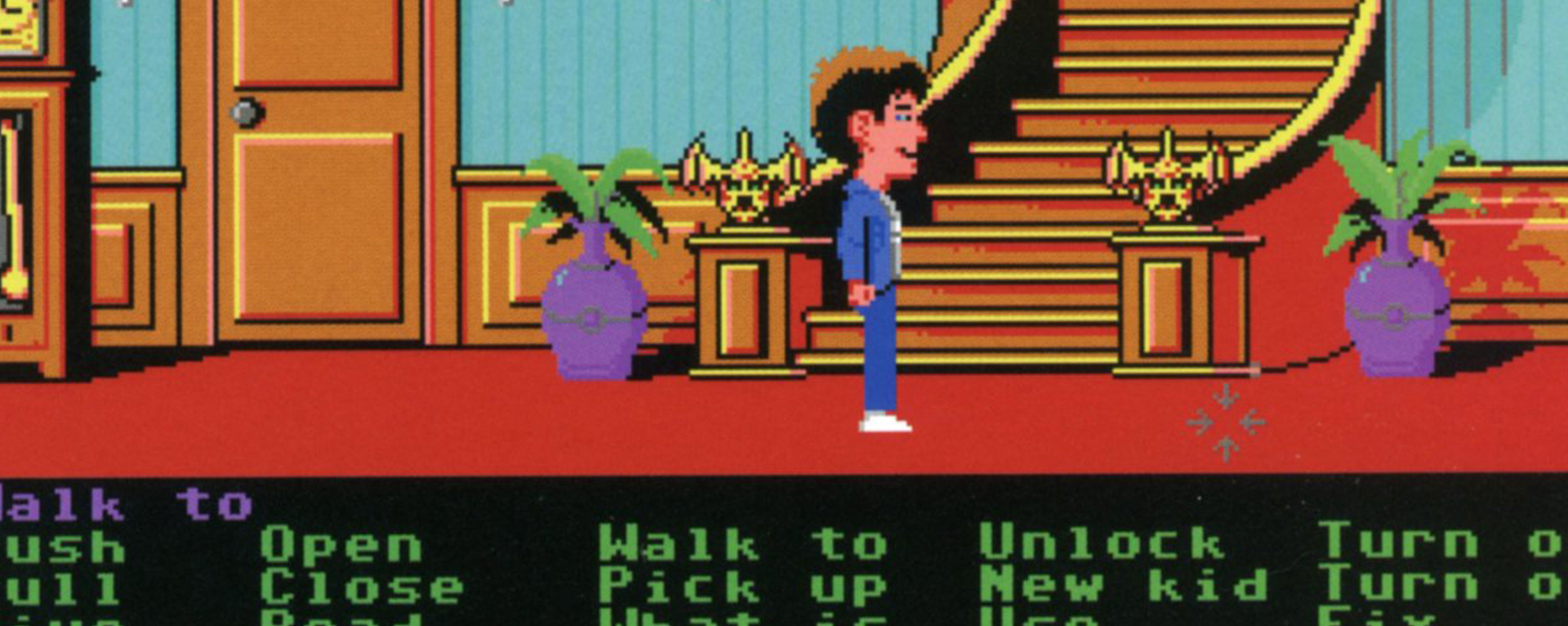Lucasfilm Originals: SCUMM
A Computer Game Engine Opened the Door to New Lucasfilm Stories
In the mid-1980s, the Lucasfilm Games team was a small outgrowth of the company’s former Computer Division which had spawned a new graphics company, Pixar, Inc. and introduced the digital film production tools, EditDroid and SoundDroid. With less than 20 people, the young games group would continue as its own burgeoning division experimenting with a relatively new form of entertainment and storytelling.
Because the popular Star Wars and Indiana Jones franchises were licensed to outside game developers, the Lucasfilm team had to create original games of their own. They had met the challenge with imaginative science-fiction and fantasy tales for the home computer including Rescue of Fractalus!, Ballblazer, Koronis Rift, and The Eidolon. By 1986, they’d been given the keys to adapt a new Lucasfilm co-production with a game inspired by Jim Henson’s Labyrinth. That game had pushed the technological limits of graphic adventure games, and in classic Lucasfilm fashion, the group would discover ways to innovate their game design for future titles.
Adventure games had been popular on home computers for some years, but most up to that point were text-driven stories where players typed in commands, often trying to guess the correct words. Lucasfilm creators wanted to expand on the graphic style that allowed players to interact directly with a visual world by pointing and clicking on objects and pre-set commands. Designer and programmer Ron Gilbert and artist Gary Winnick had developed a concept for a story they called Maniac Mansion, which depicted a group of teenagers searching for a lost friend inside a large, mysterious house occupied by bizarre, macabre, and often hilarious denizens.
As Gilbert first attempted to build the game using the traditional programming language, it became clear that the usual method of assembling code would not suffice for their ambitious plans. Software engineer and designer Chip Morningstar recommended that Gilbert create a new scripting language that would help streamline the process of creating the game’s massive number of rooms, characters, and scenarios. The result was a highly adept new game engine known affectionately as SCUMM – Script Creation Utility for Maniac Mansion.
SCUMM allowed programmers like Gilbert to efficiently write new game elements without having to write out the seemingly endless minutiae of source code. It removed a number of inhibitions to the creative process, and allowed Lucasfilm game developers to more actively craft their stories as if they were writing a movie script.
Initially devised as a means to realize Maniac Mansion – which was released in 1987 – SCUMM proved a highly versatile engine that would be revised and adapted to Lucasfilm adventure games for another decade. Designers and programmers like David Fox, Aric Wilmunder, Noah Falstein, Brian Moriarty, Tim Schafer, Dave Grossman, and Gilbert himself would use SCUMM for classic games like Zak McKracken and the Alien Mindbenders (1988), Indiana Jones and the Last Crusade (1989), Loom (1990), The Secret of Monkey Island (1990), and a Maniac Mansion sequel known as Day of the Tentacle (1993).
SCUMM remains a classic example of how the demands of new storytelling drive technical innovations at Lucasfilm.


